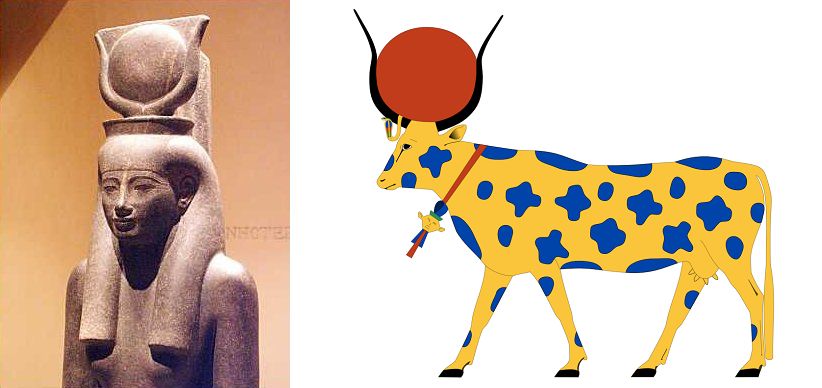The goddess in the mythology of ancient Egypt was in the beginning only a local goddess. In the further course of time, however, she rose to become the heavenly goddess of the West and became an all-encompassing mother goddess. But she was also goddess of love, peace, beauty, dance, art and music, as well as goddess of the dead. Her portrayal is extremely diverse. She was depicted as a standing woman with cow horns and a sun disk in between, completely as a cow or as a cow-headed woman, but also as a lion- or snake-headed woman and as a hippopotamus. At the annual "Festival of Drunkenness" wine was sacrificed in jars in her honour, because wine was considered a symbol of blood and the power of resurrection after death. That is why she was also called the "Mistress of wine jugs" and "Mistress of drunkenness". See also under wine gods.

Picture left: CC BY-SA 3.0, Link
Picture on the right: By Jeff Dahl - Eiegenes Werk, CC BY-SA 4.0, Link
Voices of our members

For my many years of work as an editor with a wine and culinary focus, I always like to inform myself about special questions at Wine lexicon. Spontaneous reading and following links often leads to exciting discoveries in the wide world of wine.
Dr. Christa Hanten
Fachjournalistin, Lektorin und Verkosterin, Wien